Books by Ron Duncan Hart
Gaon Books, 2015
The core of Judaism is religious practice that folds into culture and ethnicity, and yet within t... more The core of Judaism is religious practice that folds into culture and ethnicity, and yet within the overall identity as Jews, there are differences in custom and language. Ashkenazi Jews speak Yiddish and have a heritage and lifestyle from eastern European and Russian culture. Sephardic Jews come from Mediterranean lands, speak Judeo-Spanish and have a Mediterranean lifestyle, and Mizrahi Jews speak Judeo-Arabic and have Middle East lifestyles. Ethiopians, Indians, and others bring distinctive ethnicities to Judaism. Within the umbrella heritage as Jews, each group has an identity focused on their cultural practices and language.

Gaon Books/Institute for Tolerance Studies, 2007
A Phoenix Rising is an introduction to the world areas that are poised to shape the events of the... more A Phoenix Rising is an introduction to the world areas that are poised to shape the events of the twenty-first century. Learning about the cultures and mind sets of the people from other major world regions gives us a better chance of peacefully cohabiting this increasingly finite planet. In the twenty-first century, we are citizens of the world, and this book provides information so that we can act as culturally informed citizens with respect for those around us. It discusses how culture, religion, and historical events influence the way the people of the Middle East and Asia insert themselves as actors on the global stage of today. We are in a period of major changes, as the nations of the Muslim world and Asia reassume their roles as key global players. All nations will have to adjust to a greater sharing of markets and resources, as well as having tolerance and understanding about this global encounter of ideologies and cosmologies. In the past we have had safe geographical distances to insulate our religious and cultural differences with buffer zones, but no more.

Why does the story of secret Jews fascinate us? What is crypto-Judaism? In recent decades religio... more Why does the story of secret Jews fascinate us? What is crypto-Judaism? In recent decades religious practices that were preserved in hiding for centuries have become more widely known. Specifically, families of Spanish Jewish descent have retained elements of Judaism for five hundred years. What incredible religious and cultural tenacity! For many these elements represent a discovered identity that helps to explain mysteries in their lives. Is a person Jewish by genes, cultural heritage, religious practice, or by choice? What survives for a person whose ancestors were Jewish five hundred years ago?
Fractured Faiths traces the history of the Sephardic and converso (converted) Jews from their Golden Age to the twenty-first century, in both the land they left behind and in the lands they later settled. Documents, maps, paintings, and objects illuminate the history of Sephardic Jews from Spain to Mexico to New Mexico.
A low-resolution PDF of the catalogue is available for download.
Papers by Ron Duncan Hart
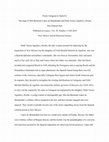
Legacy - New Mexico Jewish Historical Society, 2024
Doña Teresa Aguilera y Roche, the only women arrested for Judaizing by the Inquisition in New Mex... more Doña Teresa Aguilera y Roche, the only women arrested for Judaizing by the Inquisition in New Mexico was the daughter of Field Marshal Melchor de Aguilera, who was a Spanish diplomat and military commander. She was born in Alexsandria, Italy and spent much of her early life in Italy and France where her father was stationed. After the Dutch invaded and conquered Brazil in 1630, defeating the Portuguese and occupying Recife and the Pernambuco hinterland rich in sugar plantations, the Spanish feared losing their own rich colonies in the Americas, especially Cartagena their largest and richest South American port. In response, they decided to strengthen the existing fortifications in Cartagena, and Field Marshal Melchor de Aguilera was named the military governor of that port city (1638-1641) to carry out the expansion. He came to Cartagena accompanied by his daughter, Doña Teresa Aguilera y Roche, a young woman of marriageable age. She met Bernardo López de Mendizábal, a military officer assigned to the fort, and they became engaged and were married. They would eventually become one of the most compelling stories from the Spanish colonial period in New Mexico.
Institute for Tolerance Studies, 2008
Cain's question, "Am I my brother's keeper?" is at the core of Jewish ethics. In Fact, it is the ... more Cain's question, "Am I my brother's keeper?" is at the core of Jewish ethics. In Fact, it is the first story in Genesis after the Garden of Eden narratives, and it addresses the issu of killing our fellow humans. The place of honor given to this story in the Biblical teachings emphasizes its importance in Jewish thought and life. In each generationwe re-learn our ethical responsibility to respect not only human life but also the dignity of life.
Salem Press, 2004
Damia al-Kahina, the Jewish Queen of the Berbers, was born into the Jarawa tribe of Berbers who w... more Damia al-Kahina, the Jewish Queen of the Berbers, was born into the Jarawa tribe of Berbers who were located in the Aures Mountains of Algeria. She has been called the “Deborah” of the Berbers because of her military leadership of the tribe, and French writers have referred to her as the “Joan of Arc” of Africa.
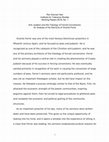
Institute for Tolerance Studies, Working Papers, 2018
Vicente Ferrer was one of the most famous Dominican preachers in fifteenth century Spain, and he ... more Vicente Ferrer was one of the most famous Dominican preachers in fifteenth century Spain, and he focused on Jews and Judaism. He is recognized as one of the catalysts of the Christian anti-Judaism, and he was one of the primary architects of the theology of forced conversions. Ferrer and his sermons played a central role in creating the phenomenon of Crypto-Judaism because of his success in forcing conversions. He was eventually sainted primarily in recognition of his work in causing the conversion of large numbers of Jews. Ferrer’s sermons were not particularly profound, and he was not an important theologian scholar, but he did have impact on the masses. He followed a process strikingly similar to that of the Nazis. First, he attacked the economic strength of the Jewish communities, inspiring pogroms against them, then he turned to legal procedures to ghettoize Jews and complete the economic and political gutting of the community structures.
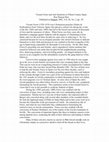
HaLapid, 2002
Vicente Ferrer (1350-1419) was a Dominican preacher (Orden de Predicadores) from Valencia, Spain ... more Vicente Ferrer (1350-1419) was a Dominican preacher (Orden de Predicadores) from Valencia, Spain who played a critical role during the events of the late 1300's and early 1400's that led to the forced conversions of thousands of Jews and the massacres of others. When Ferrer was forty years old, he launched a campaign against Judaism with the purpose of eliminating it from Spain, and over the next three decades he came close to achieving it. He was canonized because he was an eloquent preacher who stirred Christians to dedicate themselves to their faith and because he was credited as the best evangelist of the age in Spain being responsible for thousands of conversions. On the other hand, Ferrer=s preaching was anti-Semitic, and it engendered violent emotions that turned his followers into mobs that invaded Jewish neighborhoods assaulting Jews, destroying property, and even killing people. An integral element to his success as an evangelist was the intimidation created by the gang behavior of his followers.
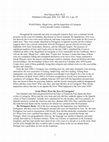
HaLapid, 2006
Throughout the sixteenth and early seventeenth centuries there was a continual Jewish presence on... more Throughout the sixteenth and early seventeenth centuries there was a continual Jewish presence on the coast of Colombia, then known as Nueva Granada. By Spanish law, Jews were not allowed, but it was a law rarely enforced, and many concessions were made by the Crown to admit Jews. They were usually identified as Portuguese in Spanish records, but the evidence suggests that it was a mixed community between Portuguese anusim (forced converts) and Sephardic Jews from Amsterdam, Morocco, and the Ottoman Empire. The presence of significant numbers of Jews and Crypto-Jews by the late 1500's, stimulated the Crown to establish an office of the Inquisition in Cartagena in 1610, responsible for the Caribbean. Here I will use the term "Illegal Jew", rather than "Crypto-Jew" because it seems that many of them were not completely hiding and considered themselves to be active Jews. Some continued to attend Minyans, knew the prayers and blessings central to Judaism, observed Shabbat and other Jewish holidays. The descendants of these Jews who stayed in Colombia after 1650 became Crypto-Jews, most of them gradually losing their religious and cultural roots over the succeeding decades and centuries. From the mid-1500's, Cartagena was a bustling port city, and many foreigners were arriving, attracted by the new economies of mining, landowning, and slave trading. Among these immigrants were many who practiced Judaism even though it was illegal to be a Jew in any of the territories of Spain. From 1580 to 1635 men recognized as Jewish were prominent in the commerce of Cartagena. Then, suddenly between 1635 and 1645 the Inquisition arrested more than one dozen of them for practicing Judaism, and the Jewish community publicly disappeared. Where did they come from? Who were they, and what did they do in Cartagena? Why did the Inquisition choose that time to act against the Jews? What happened to the Jews after 1650?
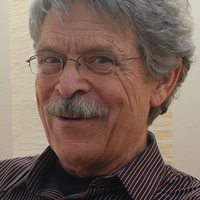
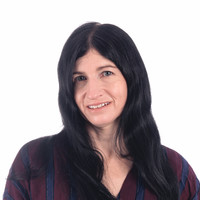
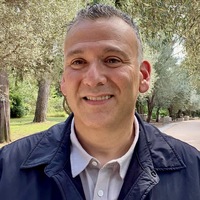
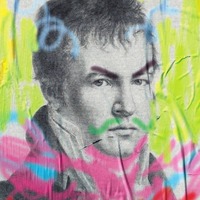
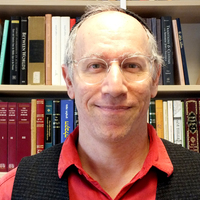

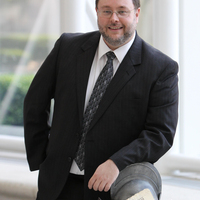

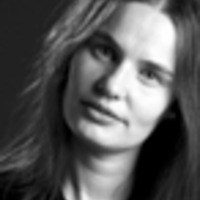

Uploads
Books by Ron Duncan Hart
Fractured Faiths traces the history of the Sephardic and converso (converted) Jews from their Golden Age to the twenty-first century, in both the land they left behind and in the lands they later settled. Documents, maps, paintings, and objects illuminate the history of Sephardic Jews from Spain to Mexico to New Mexico.
A low-resolution PDF of the catalogue is available for download.
Papers by Ron Duncan Hart
Fractured Faiths traces the history of the Sephardic and converso (converted) Jews from their Golden Age to the twenty-first century, in both the land they left behind and in the lands they later settled. Documents, maps, paintings, and objects illuminate the history of Sephardic Jews from Spain to Mexico to New Mexico.
A low-resolution PDF of the catalogue is available for download.